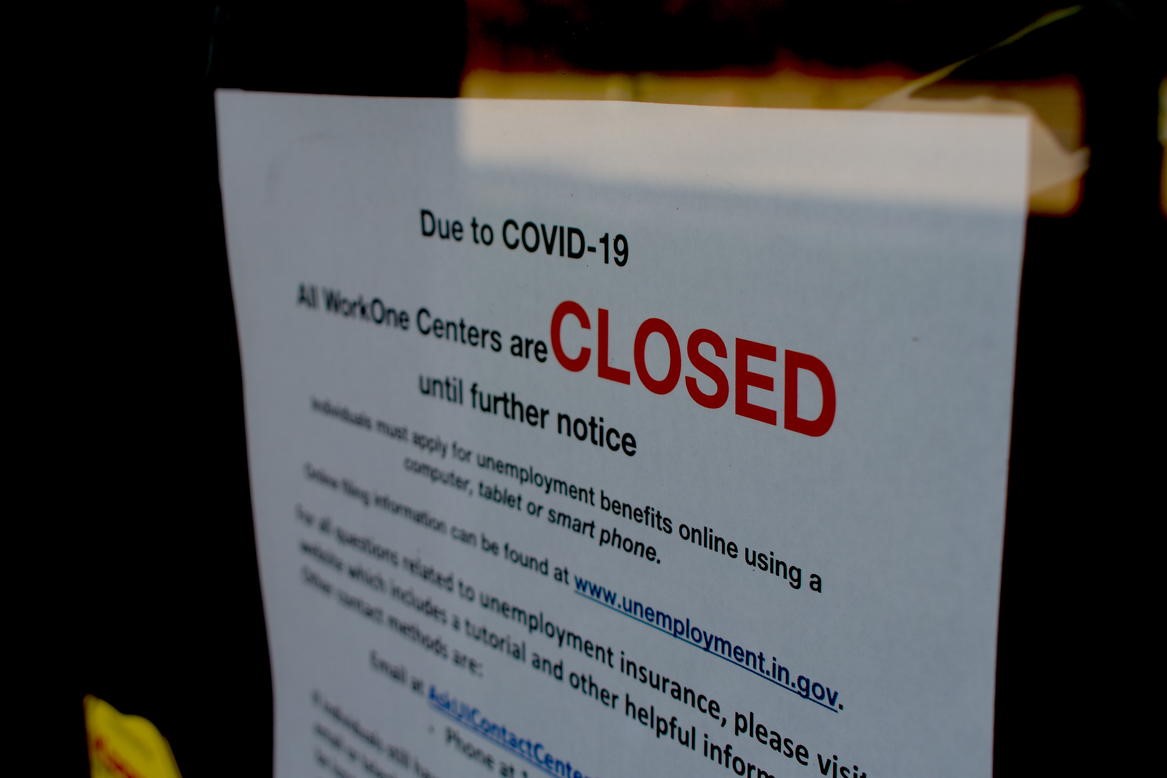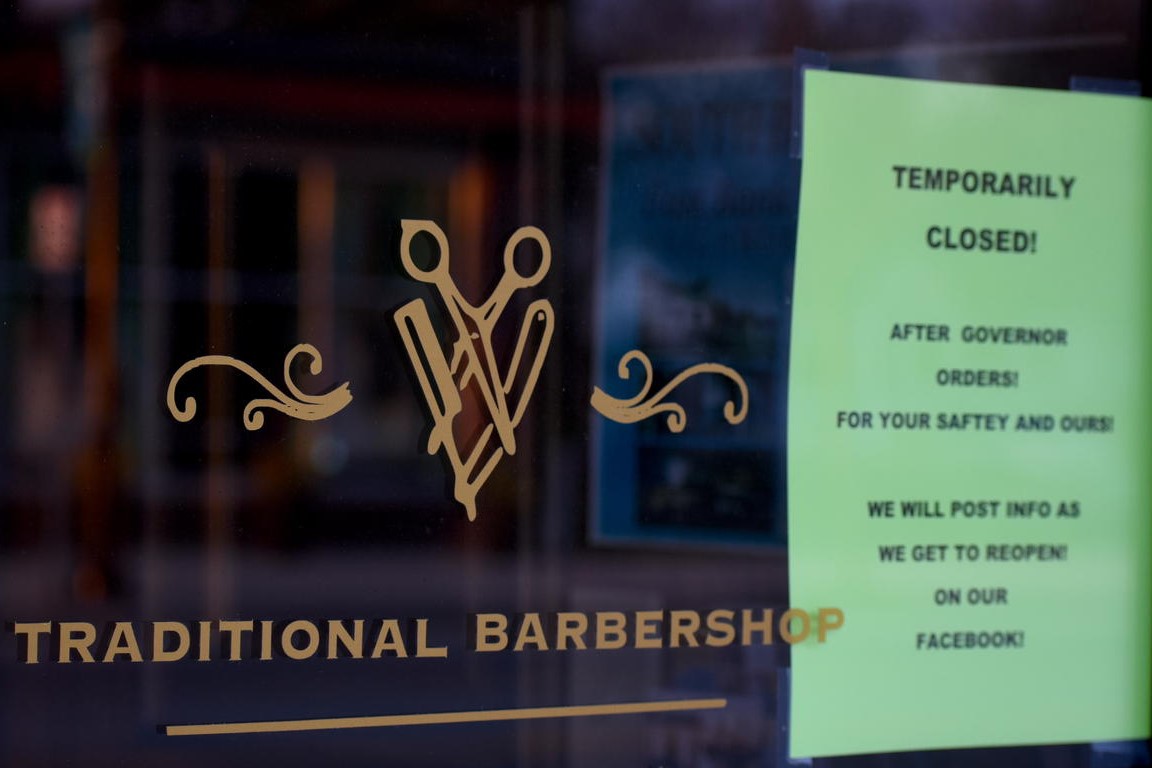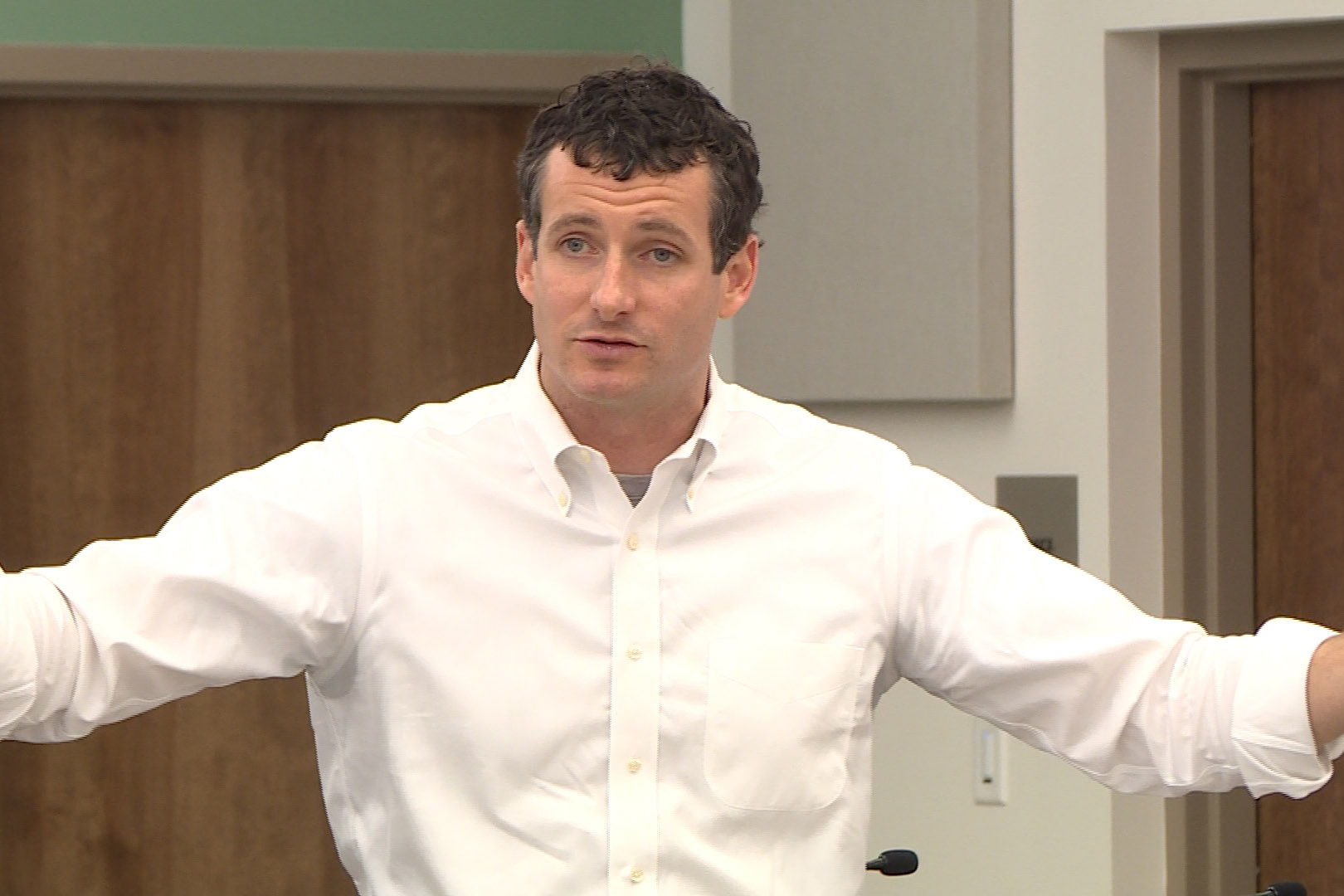
(Zach Herndon, WTIU/WFIU News)
When you live somewhere for a while, you’re bound to see some changes.
As someone who has lived or worked in Bloomington for the last 50 years, Kevin Burdeshaw has seen the city change a lot. And he isn’t loving what he’s seeing.
“A lot of people I know – a lot of lifelong residents I know – [are] concerned about the concentration of population in downtown Bloomington, particularly in these big, boxy apartment buildings,” Burdeshaw says.
He says he misses the days when buildings throughout Bloomington had character similar to Harmony School, where he volunteers. Although the school was founded in 1974, the historic Elm Heights school building it resides in was built back in 1926.
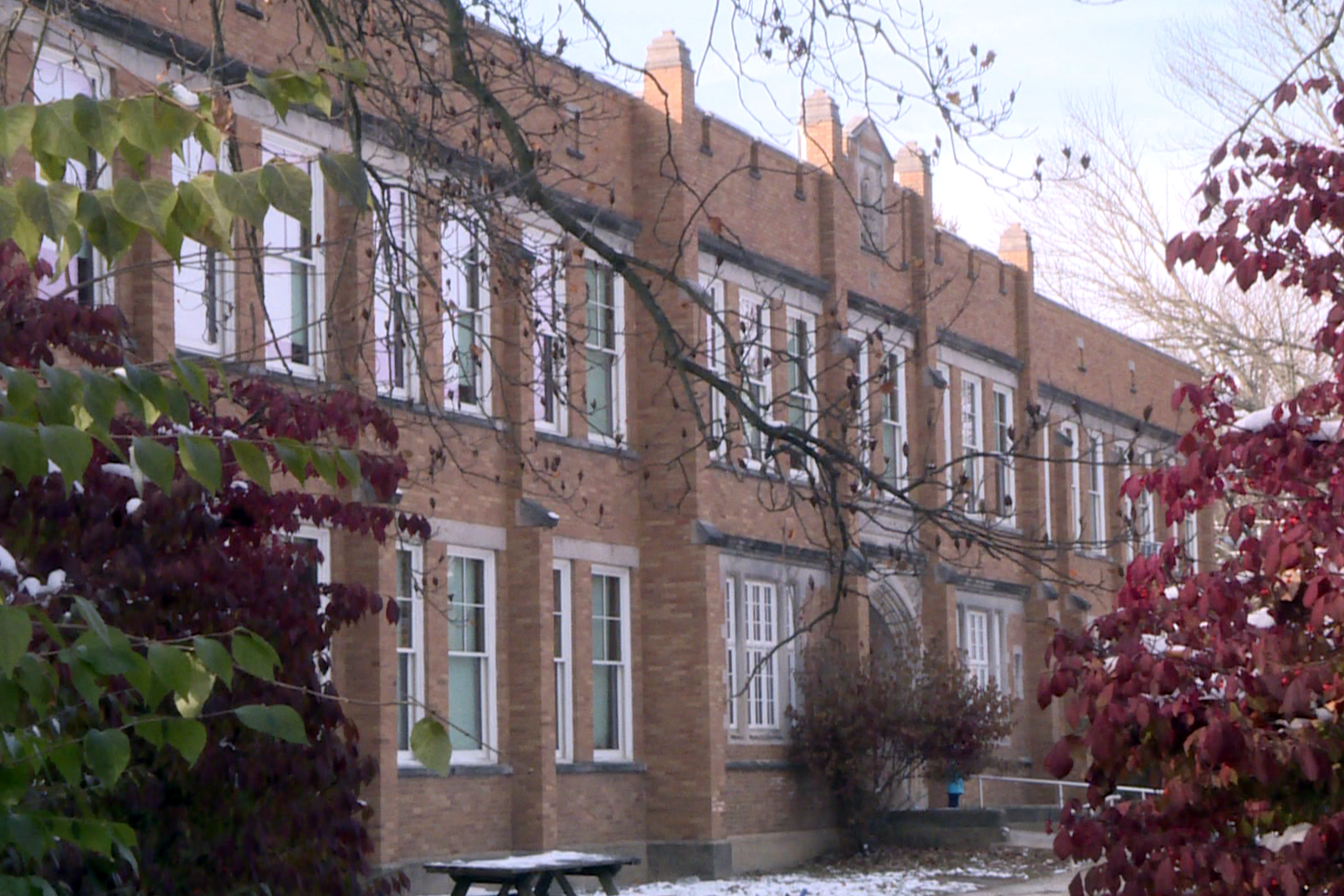
Burdeshaw says he has become troubled about the city’s decisions to tear down old structures in favor of “big, boxy apartment buildings.”
“A big shoebox is fine with a nice false front with different kinds of patterns on it,” he says. “But they all start looking kinda generic after a while.”
He asked City Limits to look into the issue. Where did these large student complexes come from? And what is the city hoping to accomplish with them?
According to U.S. census estimates, almost 85,000 people currently live in Bloomington.
Nearly half those people are students, and they need places to live.
That’s why there’s been an increase in multifamily housing since 2015, according to Tina Peterson, the president and CEO of the nonprofit organization Regional Opportunity Initiatives, which was established to address prosperity in the 11 countries that make up what it calls the Indiana Uplands.
“Certainly, I don’t think there’s any question that we’ve seen explosion in multifamily housing,” Peterson says. “And that the vast majority of multifamily housing would probably fall under the category of student housing.”
According to ROI’s recent housing study, Bloomington has added 1,283 multifamily housing units since 2015. When you compare that to the 154 single-family units that have been completed over the same time, it’s hard to say that Burdeshaw is wrong about the recent explosion in student housing.
But where did that explosion come from?
According to Bloomington’s Senior Zoning Planner Eric Greulich, it started in 1995, when the city approved a new zoning code to reinvigorate downtown.
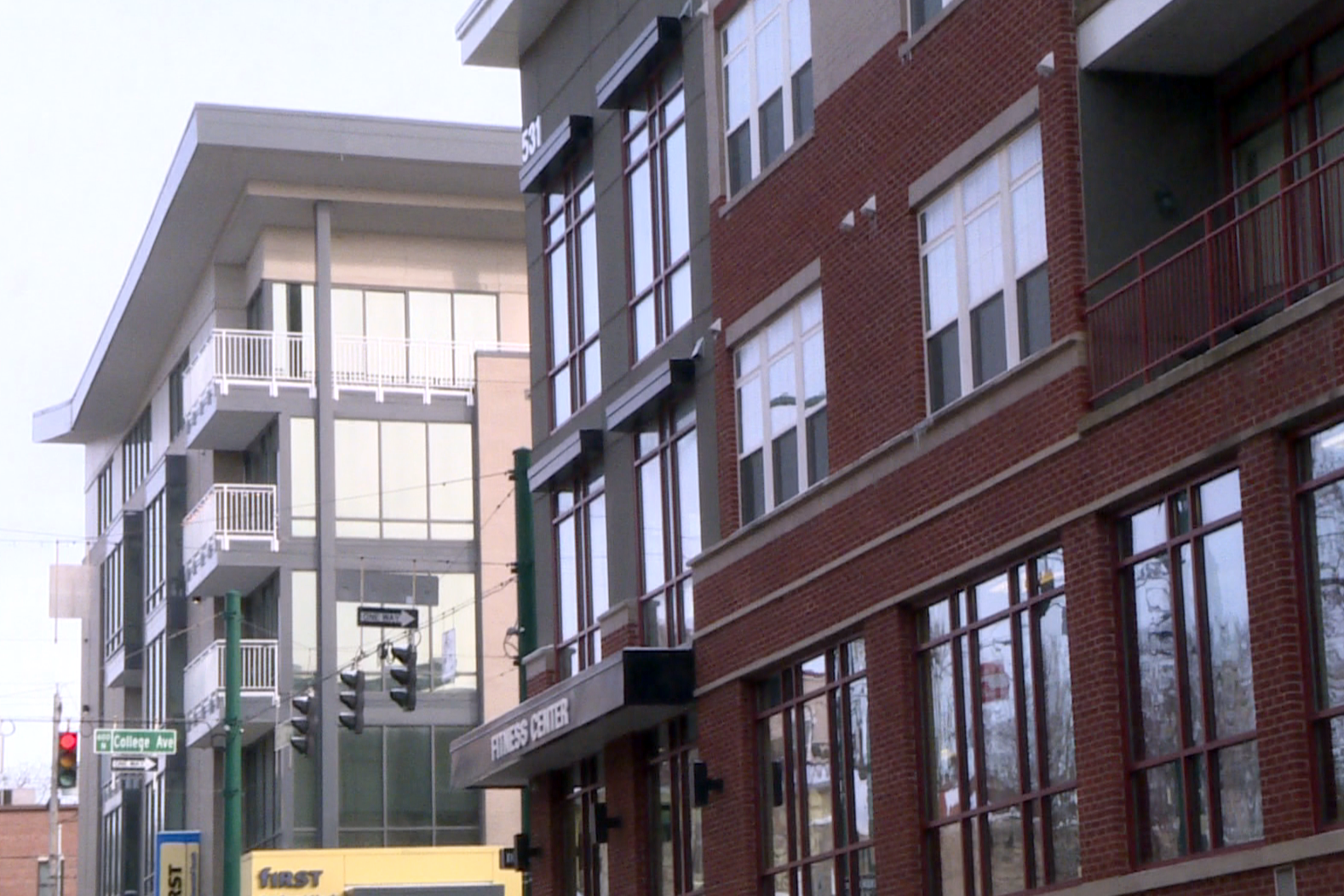
“We had what’s called a Downtown Development Opportunity Overlay, which gave for increased density within certain areas surrounding downtown,” Greulich says. “So that we could get people down there, get businesses activated.”
He says the way Bloomington was designed from the beginning makes it difficult to increase density outside of downtown.
“If you look at a map of IU and the surrounding properties, you’re gonna see a mix of things,” Greulich says. “You’ve got a lot of single-family neighborhoods to the east and south; to the west, kinda between campus and College [Ave.], there’s a lot of historic properties. So there aren’t many places where you can get high-density development that can kind of serve many purposes.”
As buildings were going up in Bloomington, the Twin Towers came down in New York City. Greulich theorizes that 9/11 actually helped push students from large metropolitan areas on the East Coast toward Bloomington and the Midwest, which parents thought would be safer from possible follow-up terrorist attacks.
“They billed IU kinda as a safe place to send your kids, so there was a lot more influx of out-of-state students,” Greulich says. “These out-of-state students oftentimes had a little bit more money to spend on housing. They were used to higher housing costs, so developers were quickly realizing that they could build apartments, high-end, top-end stuff, and they’d get a lot of return on their investment.”
Out-of-state enrollment was already increasing in the late ’90s, but IU Bloomington added just over a thousand out-of-state students in the two years following 9/11. Since then, IU has added about 360 out-of-state students each year.
Greulich says developers just went where the money was.
“If this is what people are buying, this is what people are gonna build,” he says. “So, high-end students, there was a market, there was a demand for that. The developers said, ‘Hey, we’re selling apartments like hot cakes here. We’ve got 95 percent occupancy rates. This is where the money is, so we’re gonna keep building that.”
But if complexes are good for developers, Burdeshaw wants to know – how does that help Bloomington’s full-time residents?
“One of the benefits for the community and what we were trying to accomplish is getting renters out of the core neighborhoods,” Greulich says. “So that reduces the impacts to people that’re living in those neighborhoods and it frees up some of those housing opportunities for residents to move into what was formally a student rental house.”
The thought process follows simple supply and demand: if more student housing complexes are built downtown, their rents will go down. And more students will be able to live downtown with their friends, close to the bars in shiny new buildings with things like internet and utilities already included.
Greulich says he knows that’s a possibility, not a certainty. But he says odds are downtown Bloomington will continue changing as its population continues to grow.
“Bloomington has had a positive population growth for decades and we’re going to probably continue to do that,” he says. “Certainly as a result of IU. But also, Bloomington is an amazing place to be. People realize that. Not just students. That population influx leads to growth, and you have to provide housing for these folks.”
Officials will continue to determine how to deal with Bloomington’s population growth as they continue to discuss amendments to the proposed Unified Development Ordinance tonight and next week.
Have a question? Ask City Limits:
Our community is changing, from closing businesses to traffic and road construction to affordable housing, and we see the impact of these changes all around us.
We want to know: What questions do you have about how the Bloomington of tomorrow will impact your work, your personal life, your community and your future?
Here’s how it works: You submit a question you’d like us to explore about how Bloomington has changed over the past few decades, what you want to see for the city in the future and how ties with IU continue to shape the community.
So: What do you wonder about how Bloomington is changing and how it impacts your life?
Interested in an ongoing conversation how Bloomington is changing? Join our Facebook group!







